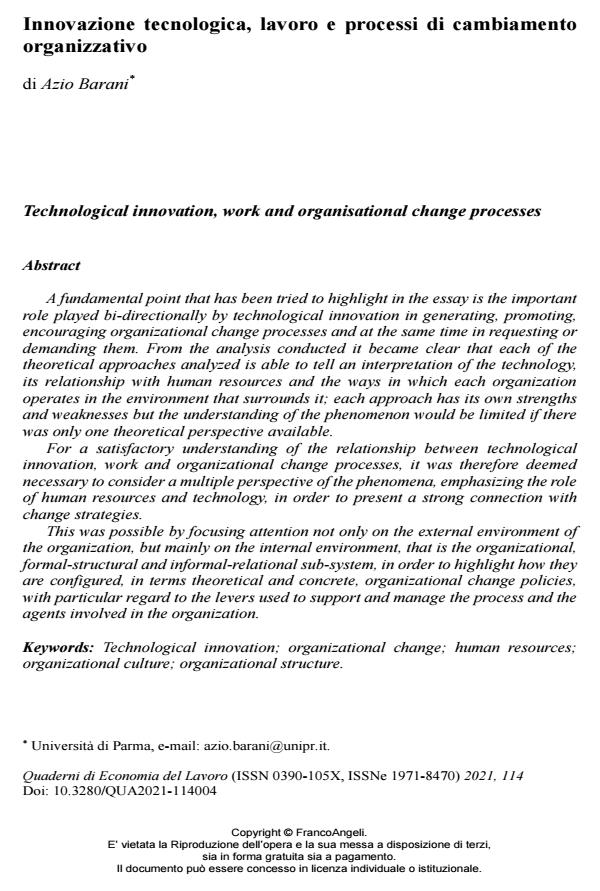Technological innovation, work and organisational change processes
Journal title QUADERNI DI ECONOMIA DEL LAVORO
Author/s Azio Barani
Publishing Year 2023 Issue 2021/114
Language Italian Pages 48 P. 81-128 File size 414 KB
DOI 10.3280/QUA2021-114004
DOI is like a bar code for intellectual property: to have more infomation
click here
Below, you can see the article first page
If you want to buy this article in PDF format, you can do it, following the instructions to buy download credits

FrancoAngeli is member of Publishers International Linking Association, Inc (PILA), a not-for-profit association which run the CrossRef service enabling links to and from online scholarly content.
A fundamental point that has been tried to highlight in the essay is the important role played bi-directionally by technological innovation in generating, promoting, encouraging organizational change processes and at the same time in requesting or demanding them. From the analysis conducted it became clear that each of the theoretical approaches analyzed is able to tell an interpretation of the technology, its relationship with human resources and the ways in which each organization operates in the environment that surrounds it; each approach has its own strengths and weaknesses but the understanding of the phenomenon would be limited if there was only one theoretical perspective available. For a satisfactory understanding of the relationship between technological innovation, work and organizational change processes, it was therefore deemed necessary to consider a multiple perspective of the phenomena, emphasizing the role of human resources and technology, in order to present a strong connection with change strategies. This was possible by focusing attention not only on the external environment of the organization, but mainly on the internal environment, that is the organizational, formal-structural and informal-relational sub-system, in order to highlight how they are configured, in terms theoretical and concrete, organizational change policies, with particular regard to the levers used to support and manage the process and the agents involved in the organization.
Keywords: Technological innovation; organizational change; human resources; organizational culture; organizational structure.
Azio Barani, Innovazione tecnologica, lavoro e processi di cambiamento organizzativo in "QUADERNI DI ECONOMIA DEL LAVORO" 114/2021, pp 81-128, DOI: 10.3280/QUA2021-114004